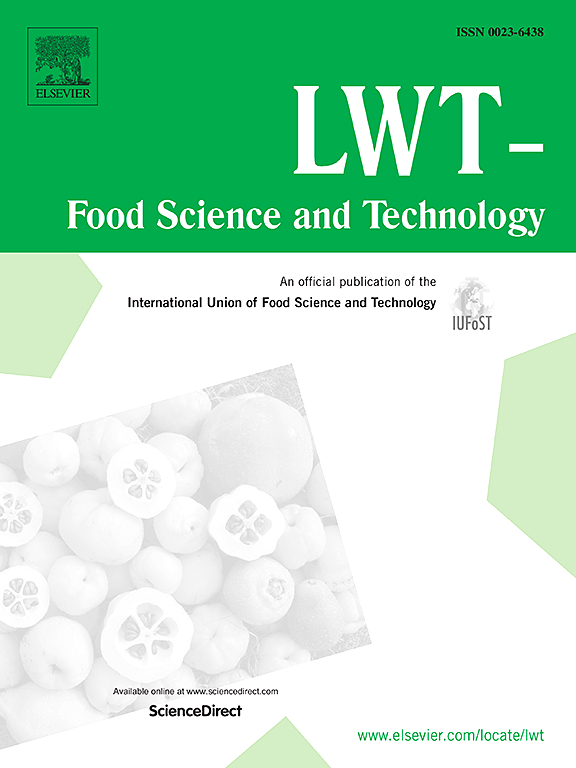Classification of bolete species and drying temperature using LC–MS and infrared spectroscopy and simultaneous prediction of their major compounds using chemometrics
IF 6
1区 农林科学
Q1 FOOD SCIENCE & TECHNOLOGY
引用次数: 0
Abstract
Postharvest processing of wild edible mushrooms is an important subject, and drying increases the difficulty of species identification and affects their nutritional value, biological activity, and sensory properties. In this study, liquid chromatography-mass spectrometry (LC-MS), Fourier-transform near-infrared (FT-NIR) and Fourier-transform infrared (FTIR) spectroscopy combined with chemometrics were used for the identification of species and quality assessment of dried boletes, a common bolete from Yunnan, China. The chemometric results revealed that LC-MS, FT-NIR, and FT-IR spectroscopy could identify boletes' species and drying temperature with an accuracy of 100.00% and 92.31%, respectively. FT-NIR combined with partial least squares regression (PLSR) was used to develop the calibration model. The coefficients of determination (R2c) of the calibration model for L-malic acid in different species and drying temperatures were 0.91 and 0.97, respectively. The predictive model (R2p) values ranged from 0.86 (drying temperature) to 0.97 (species). This study was based on infrared spectroscopy and organic acid data combined with chemometrics for effective qualitative identification and quantitative prediction of boletes. The method can be used for quality evaluation of edible mushrooms and other food products.
求助全文
约1分钟内获得全文
求助全文
来源期刊

LWT - Food Science and Technology
工程技术-食品科技
CiteScore
11.80
自引率
6.70%
发文量
1724
审稿时长
65 days
期刊介绍:
LWT - Food Science and Technology is an international journal that publishes innovative papers in the fields of food chemistry, biochemistry, microbiology, technology and nutrition. The work described should be innovative either in the approach or in the methods used. The significance of the results either for the science community or for the food industry must also be specified. Contributions written in English are welcomed in the form of review articles, short reviews, research papers, and research notes. Papers featuring animal trials and cell cultures are outside the scope of the journal and will not be considered for publication.
 求助内容:
求助内容: 应助结果提醒方式:
应助结果提醒方式:


